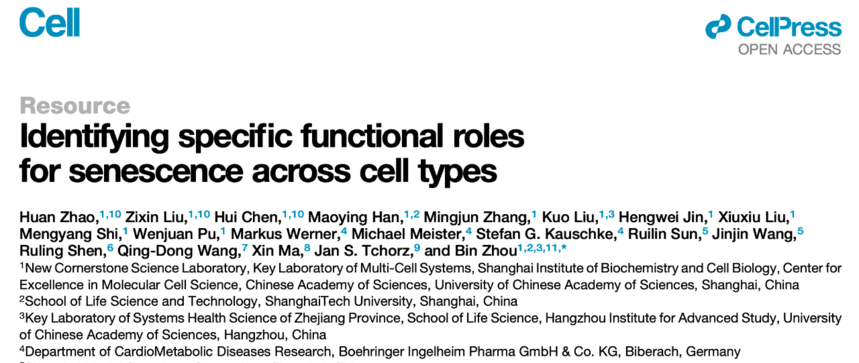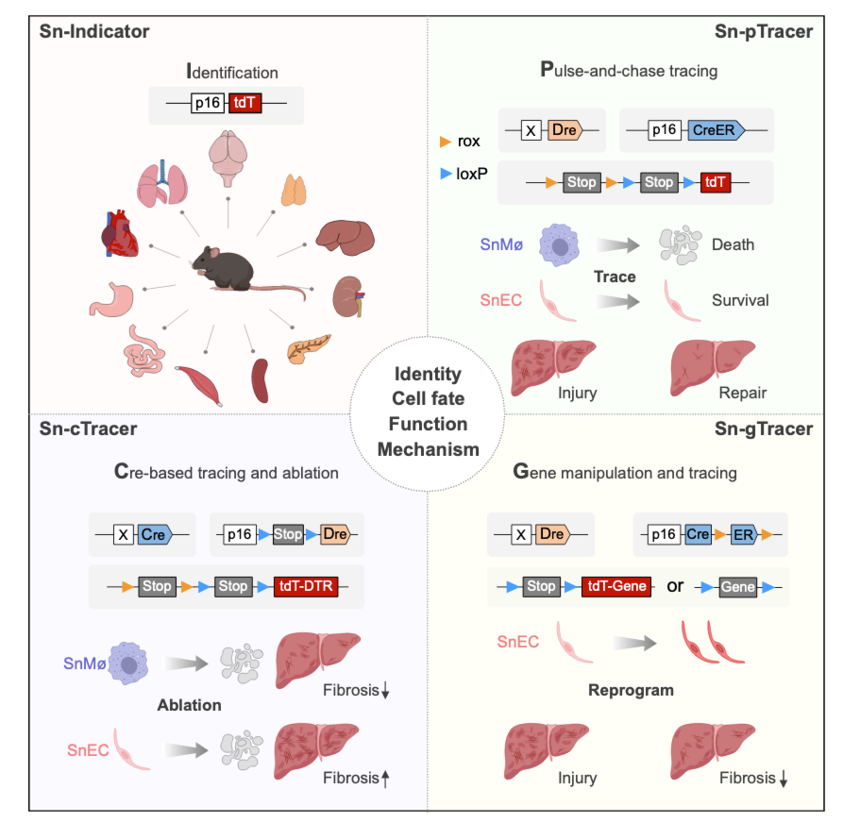Please click the button below to go to our email login page
|
Four Years of Research Results Were “Pipped at the Post”, but a Second Attempt Led to a Publication in Cell!Recently, a research team led by Zhou Bin from the Center for Excellence in Molecular Cell Science, Chinese Academy of Sciences has successfully published their work in the journal Cell after 8 years of dedicated research.
However, the journey to complete this study was fraught with challenges. From nearly two years of preliminary exploration to determining a detailed direction for in-depth research, and then facing the setback of having their initial research progress “scooped” by international peers, Zhou Bin’s team experienced a rollercoaster ride in achieving this research. Four years of research results were “pipped at the post”
One day in 2016, when Zhou Bin and Zhao Huan, who had just joined the team, discussed research directions, Zhou Bin raised a question he had long been pondering—“Why is there no single recombinant mouse for tracing and gene function study in the field of cellular senescence, when the tools for tracing cells like cardiomyocytes and hepatocytes have existed for more than a decade?” This question piqued Zhao Huan’s interest, and under Zhou Bin’s guidance, she embarked on related research.
In 2017, Zhou Bin’s research team developed a more precise dual-homologous lineage tracing technology, which can achieve accurate study of specific cell types in vivo.
In June 2020, as the research continues to deepen, Cell Metabolism successively reported two similar research outcomes originating from the United States and Japan.
The “preemption” of research findings meant that the team’s four years of effort was almost in vain.
Despite failure, simply try again
Zhou Bin told Zhao Huan that the preemption of research findings is actually common in scientific research. “When we began this research a few years ago, there were no results yet. The emergence of similar outcomes in just a few years at least demonstrates that our research direction is recognized by international peers.”
Zhao Huan explained that before the publication of the international peers’ results, the team had already been working on developing dual-homologous recombination lineage tracing technology, based on their earlier single-homologous recombination lineage tracing technology.
Despite a good concept in place, the team did not have much time left. In the following years, the pressure on Zhao Huan increased as she needed to produce even more groundbreaking results in the shortest amount of time.
“It took about a year and a half just to construct the tool mice”, she said. Ultimately, the team developed four systems and established a technology for tracing and studying the specific functions of senescent cell lineages in vivo.
In September of this year, the aforementioned achievements were officially accepted by Cell. “That moment was truly a weight off our shoulders” Zhao Huan said.
“Subduing demons and monsters” in the microscopic world
So, what is the use of cellular senescence lineage tracing and functional study technology?
Within the population of senescent cells, there are “good guys” and “bad guys”, but previous technologies were unable to accurately identify the good from the bad, let alone perform “precision targeting”.
What’s more complex is that senescent cells often live side by side with new cells. Studies have shown that senescent cells may play a positive role in certain situations, such as tumor suppression and embryonic development, implying that senescent cells are not entirely useless and cannot be simply eradicated in their entirety.
There are about 30 trillion cells in the human body, and “finding the culprits” among substantial cells is like finding a needle in a haystack.
Nevertheless, the system developed by Zhou Bin’s team allows researchers with this technology to see through appearances and directly observe the essence of cells. While gaining insight into the “true face” of senescent cells, they have also achieved more precise “punishment of the wicked and promotion of the virtuous” in liver injury mouse models, eliminating the “demons and monsters” that act as the “bad guys” among senescent cells.
In the future, the team plans to share the tool mice with other scientists to study other types of senescent cells, further unraveling the mysteries of cellular senescence. |


